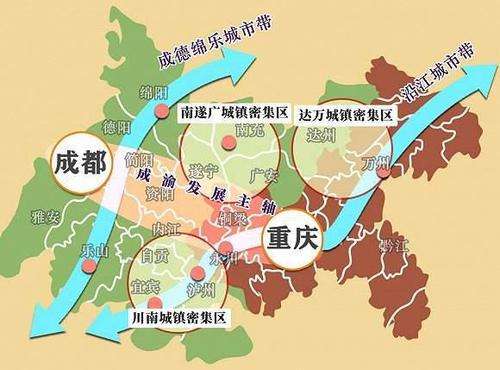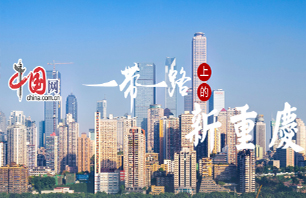 >
雙語資訊
>
雙語資訊
CHONGQING (CQNEWS) -- Mountain village, countryside, cooking smoke... In the countryside of Hufeng Mountain near Chongqing Daxuecheng, a Frenchman named Vincent Lacquer (文森·漆) lives a poetic life. Behind the countryside life, Lacquer has always insisted on his favorite career - lacquer making. In 2007, when he learned that China has a long history of lacquer making and that Chongqing is the place where high-quality lacquer trees are produced, he decided to come to the Mountain City to learn lacquer making. He set up a studio, and found his love in life. In the past 14 years, Lacquer has not only turned the lacquer in his hands into a radiant treasure, but also wrote a“love letter” to Chongqing with his love for this land.

Vincent Lacquer was originally named Vincent Cazeneuve, and the Chinese name was derived from his love for lacquer. Compared with the title of lacquer master, Lacquer prefers to define himself as a craftsman. Whenever having inspiration, Vincent Lacquer will start to work in the“shabby room” in the mountain village. Countless silk is spun into soft cloth in his hands, which is also one of the raw materials used in his lacquer works.

In 1977, Vincent Lacquer was born in Toulouse, a city in southern France. His father, a lover of history and fiction, his mother, a painter, and his grandmother, an art collector, gave him the first impression of art. When Lacquer was young, his family always took him to various art exhibitions. His favorite way of communicating with the world was to make objects in his mind with his hands, and this way has continued until now.

After studying Decorative Arts at university, Lacquer came into contact with lacquer and fell in love with it. After graduating from Liville Institute of Arts and Crafts, he devoted himself to the restoration of lacquerware. Lacquer knows that China, which has a long history, has mature lacquer craftsmanship, and Chongqing is rich in lacquer trees. In 2007, he came to Chongqing alone.

In Chongqing, Lacquer opened his first studio in China. As the saying goes,“you can get one jin lacquer after walking one hundred miles and using one thousand knives”, it is not easy to collect lacquer. Lacquer came to Chengkou, the origin of lacquer trees in Chongqing, where he met the lacquer farmer Yang Laosi. Today, they have known each other for 10 years. Every year when collecting paint, Lacquer will wear Jiefang shoes to Chengkou, eat and live with Yang Laosi, and climb trees to collect lacquer. For this friendship, Vincent Lacquer, who is not good at Chinese, expressed in what he thought was the sincerest way:“We are very close.”

Another raw material often used in Lacquer’s works is bamboo, a plant with Chinese characteristics, which is used by him to make the embryos of his lacquer works. In order to improve his bamboo weaving craftsmanship, Lacquer also visited veteran craftsmen in Wulong.

On Hufeng Mountain, bamboo trees are full of shade, and some of them are behind Lacquer’s current studio. He will take the hatchet and look for the bamboo when he needed. After cutting it off, he will draw a strip and make a basket, and then transform the basket into an embryo for making lacquer.

In order to restore the ancient weaving craftsmanship, Lacquer collected cotton from Guizhou, peeled off the cotton seeds one by one and spun them into threads. He made dyes with lacquer leaves and lacquer bark, used them to dye the cloth he had woven, and then used the dyeing cloth in his lacquer paintings. Lacquer will also apply lacquer on common daily necessities such as bamboo baskets and rice bags. Lacquer said that his job is to record the traces left by people on these objects, and these traces are life.

Lacquer’s studio in Hufeng Mountain was originally a farmhouse. On the floor of the kitchen of the adobe house, there are also deep and shallow traces of the family’s life: the lines of the soles of adults and children, the dents of the stacked pots and bowls, and even the footprints of dogs… Lacquer rubbed these imprints of life into embryos, and completed this work with traditional Chinese lacquer making craftsmanship.

For Vincent Lacquer, in addition to his favorite lacquer, his beloved wife Xiao Rong, who knows him best, is also in Chongqing. Xiao Rong was born in a rural area of Sichuan, studied oil painting at university, and then began to study sewing, weaving and embroidery. Every time Lacquer wants to hold an exhibition or attend an important event, Xiao Rong will personally sew a suit for him. At the end of July last year, their child was born. Regarding the current country life, both of them are at ease.

In 2016, Lacquer used the lacquer paintings that he created during his life in Chongqing, including Chengkou raw lacquer, Rongchang summer cloth, hand-woven bamboo mat, tongs... to hold an exhibition entitled“A Love Letter from a Frenchman to Chongqing”, he used these objects he learned in Chongqing to write a love letter for his beloved Chongqing, and dedicated it to his dream and his beloved wife.

In his spare time, Lacquer often wears a pair of Jiefang shoes and a T-shirt covered with lacquer, fishing with friends, and walking with his family. He gets up while hearing the rooster crow, and closes the studio door before sunset. This is the simple and happy life of his family.

14 years have passed in a flush. Now, Vincent Lacquer is still exploring the long historical story behind the traditional Chinese lacquer painting art, and combining his artistic creation with traditional lacquer painting craftsmanship. Lacquer, a name born for lacquer, a French who loves lacquer art, brought a different“Chongqing flavor” to lacquer art in Chongqing. (Translated by Zhang Ying, Fathom Language Limited)












 京公網安備 11010802027341號
京公網安備 11010802027341號